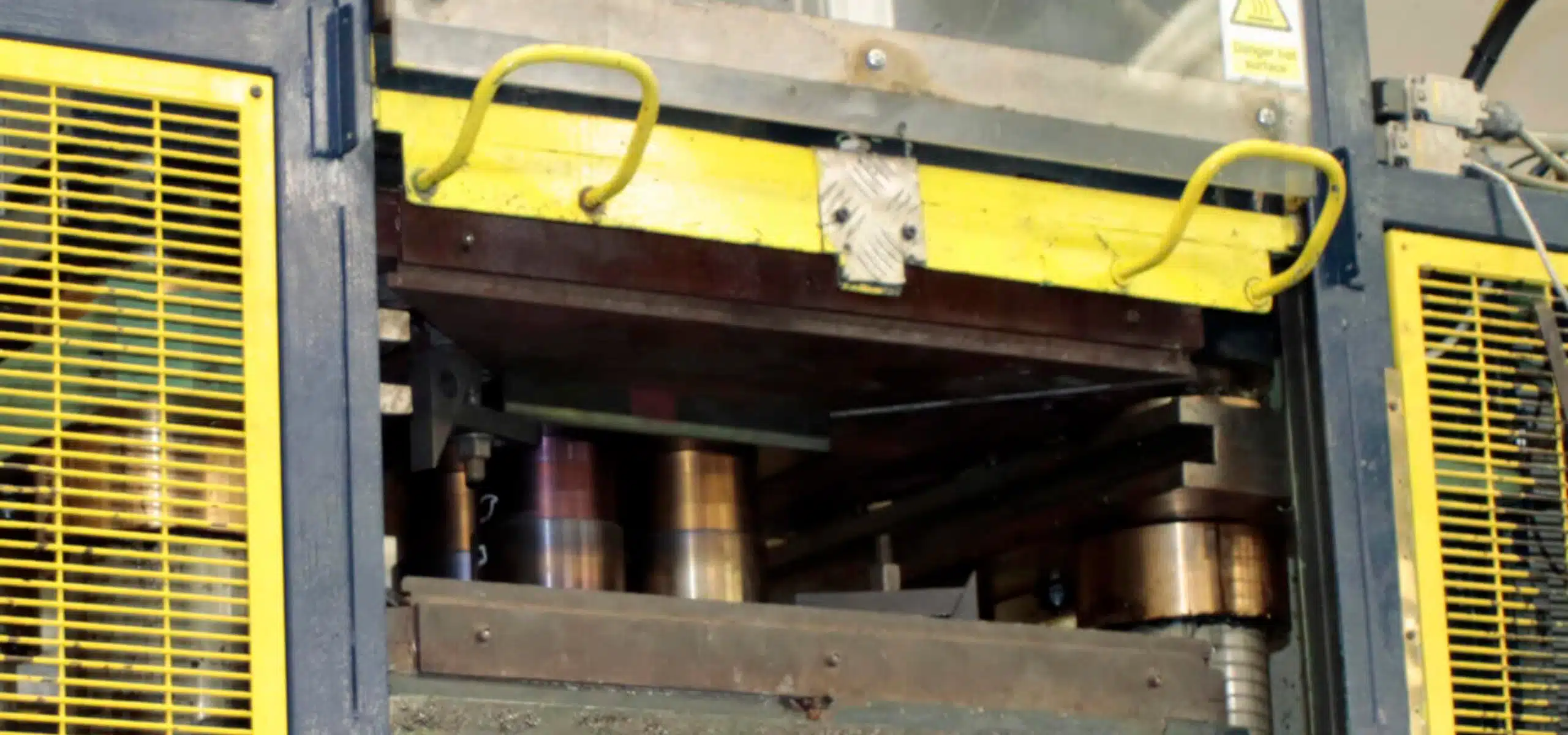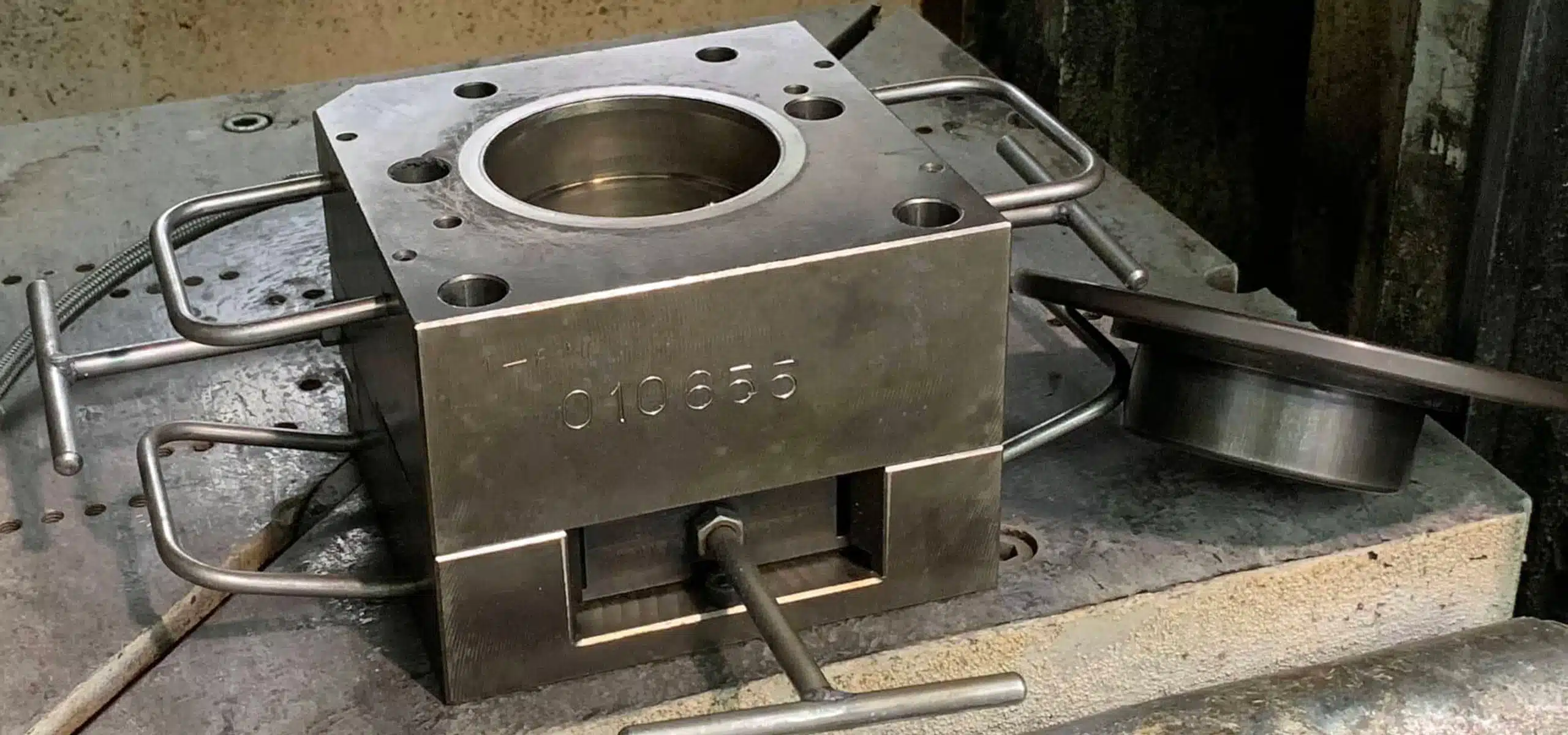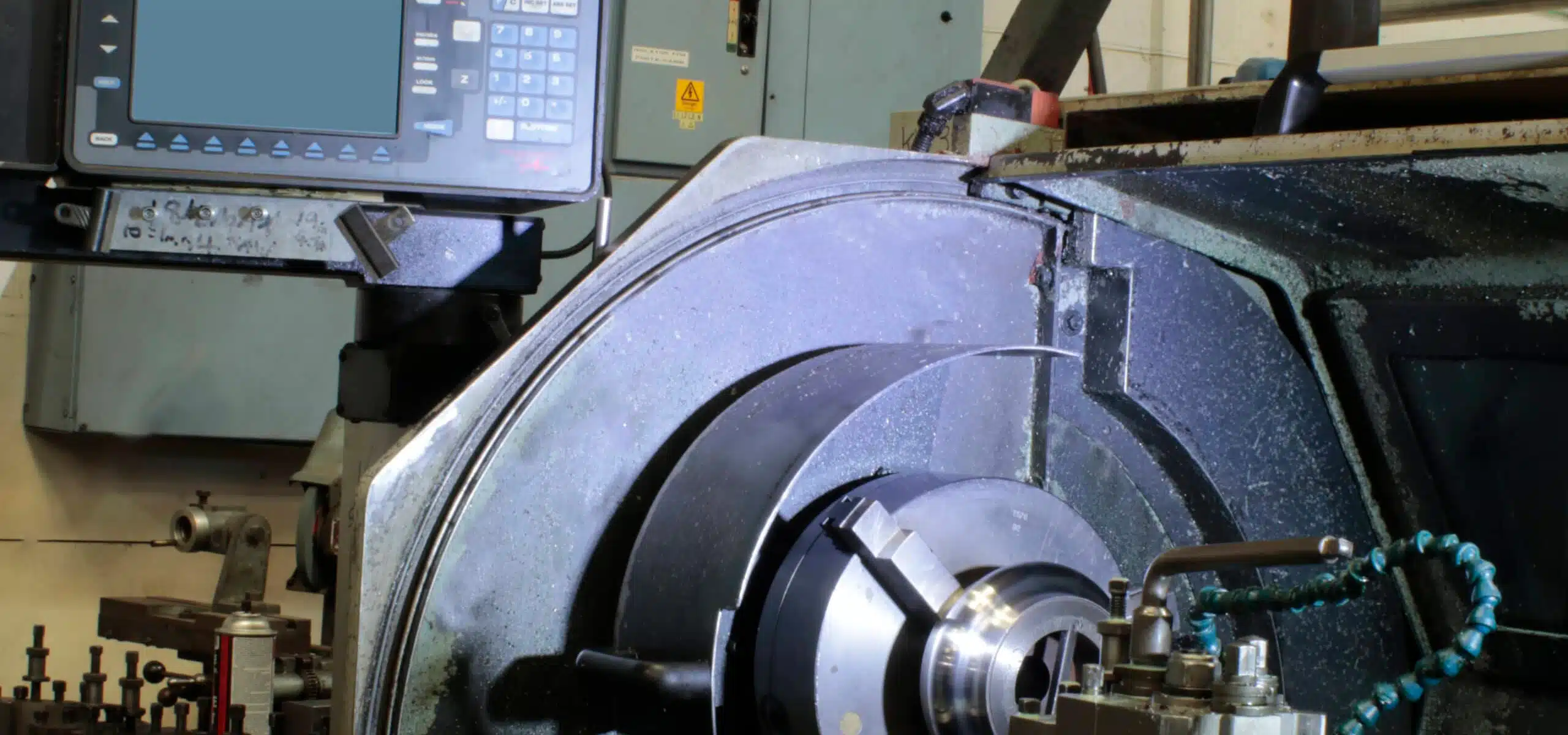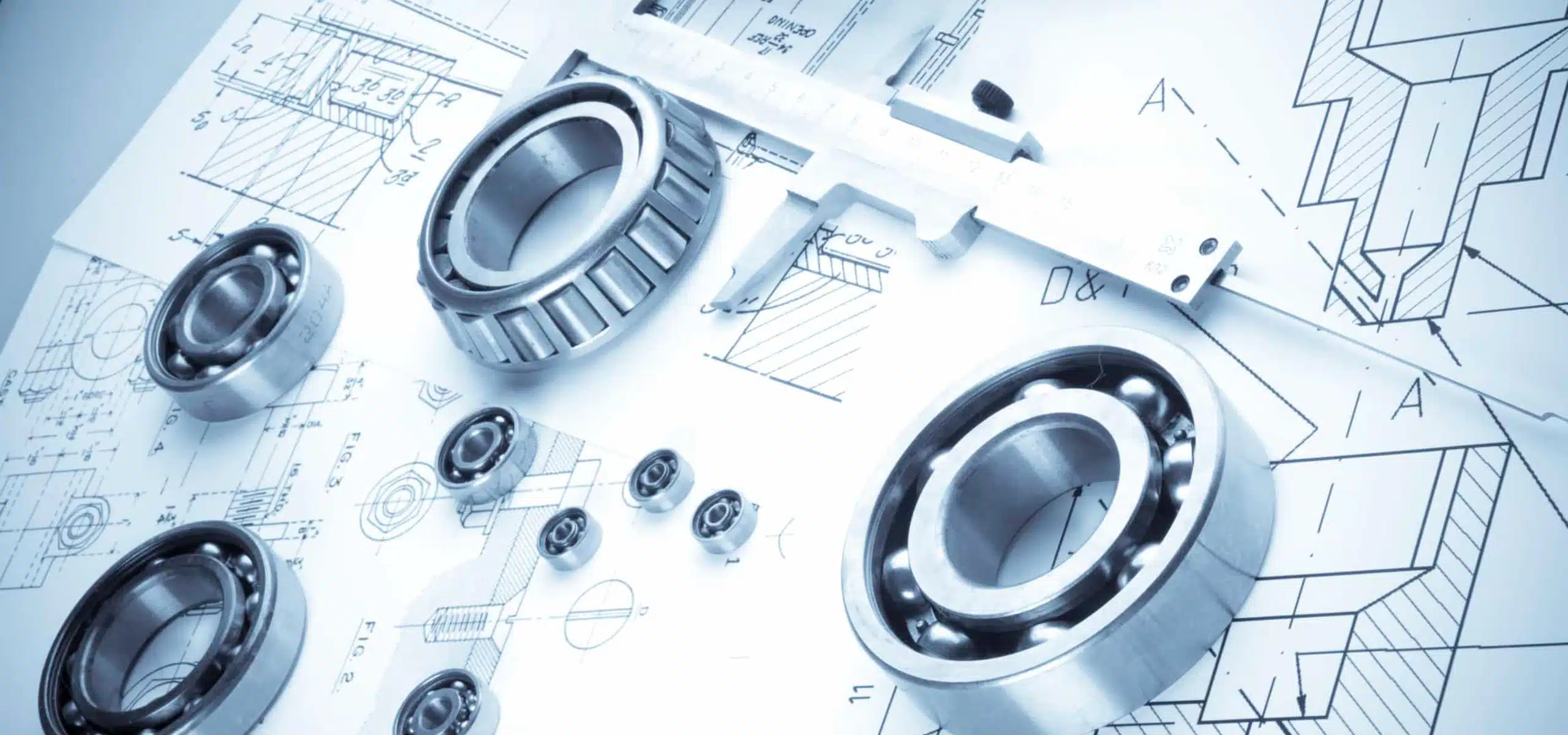Injection Rubber Moulding
Injection moulding machines are either vertically or horizontally run.
Injection moulding is a process where heated elastomer is injected into a closed cavity via a runner system.
Uncured elastomer is fed into the injection cylinder, where it is preheated and accurately metered into the mould. This process is carefully controlled through pressure, injection time, and temperature settings.
The material is then held under high pressure and at a raised temperature to achieve curing. Once curing is complete, the formed parts are ejected from the mould cavities.
Suitable for moulding delicate parts
Shorter cycle times compared with compression moulding
High levels of automation reduce labour requirements
Lower levels of flash, as the mould is shut when material is injected
- Lower unit costs
- Higher tool and set up costs
- Longer changeover times due to the complexity of tooling and additional ancillary equipment
More waste is generated as sprues and runners transport the material to the mould, and extensive material purging is required when changing colours. However, the use of a cold runner block can greatly reduce material wastage.
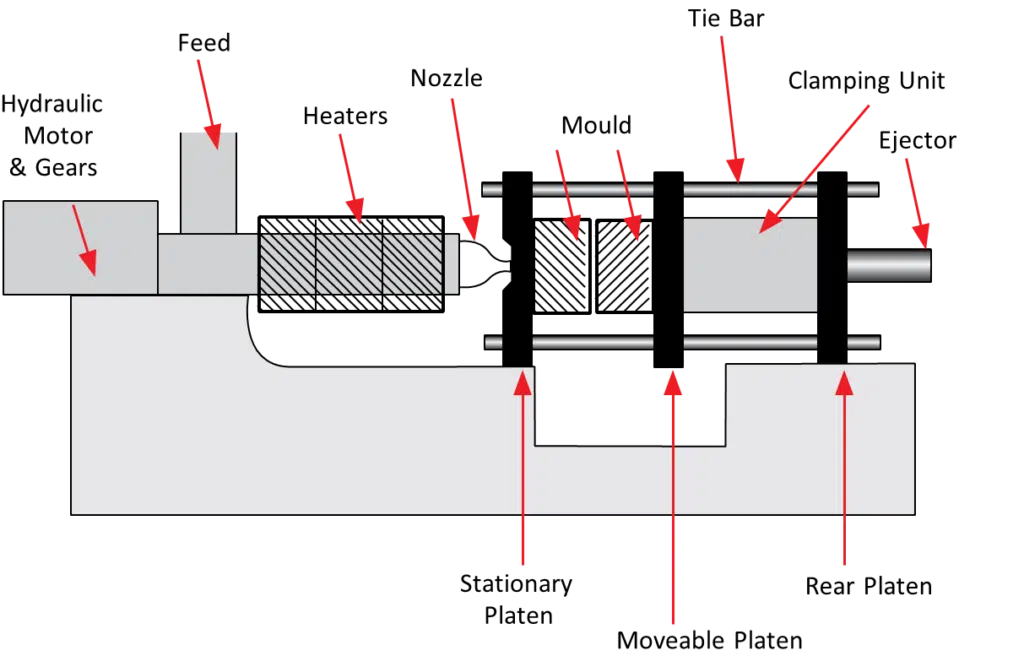
Frequently Asked Questions
What material do you recommend for injection rubber moulding?
For injection rubber moulding, we recommend using high-quality silicone or natural rubber, depending on the application’s specific requirements. Silicone rubber is ideal for high-temperature applications and offers excellent flexibility and durability, while natural rubber provides superior elasticity and tear resistance for general-purpose use. Both materials ensure high-quality, long-lasting components tailored to meet our clients’ diverse needs.
What is the difference between injection and compression moulding?
The key difference between injection and compression moulding lies in their process and application. Injection moulding involves melting the material and injecting it into a mould under high pressure, which is ideal for creating complex shapes with precise dimensions and fine details. Rubber compression molding, on the other hand, places the material directly into the mould. Heat and pressure are then applied to form the shape. This method is more suitable for larger, less complex parts, though it offers slightly lower dimensional accuracy. Each method has its advantages, depending on the specific requirements of the product being manufactured.
Can you manufacture a tool with multi cavities for injection moulding?
Yes, at Kea-Flex, we are capable of manufacturing tools with multi cavities for injection moulding. This allows us to efficiently produce multiple parts in a single moulding cycle, significantly increasing production rates while maintaining high-quality standards. Multi-cavity tools are ideal for high-volume production runs, ensuring consistent part quality and reducing overall production costs. Our team is equipped to design and manufacture custom multi-cavity moulds tailored to meet the specific requirements of your project.
What volumes can you cater for?
At Kea-Flex, we specialise in accommodating a wide range of production volumes for our clients. From small batch runs for prototype development and low-volume projects to large-scale production, our state-of-the-art manufacturing capabilities and flexible processes allow us to meet diverse client needs efficiently. Whether you require a few units or thousands, we are equipped to deliver high-quality, precision-engineered components tailored to your specifications.
What are the lead times for injection rubber moulding projects?
Lead times can vary significantly depending on several factors, including the complexity of the mould design, the current production schedule, and the specific requirements of your project. Kea-Flex prides itself on offering efficient turnaround times without compromising the quality of the final product. To get an accurate estimate tailored to your project’s specifics, please reach out to Kea-Flex’s customer service team. Our team of rubber manufacturing experts can provide you with the most up-to-date and relevant information.
Can you customise the material properties for specific applications?
At Kea-Flex, we specialise in customising material properties to perfectly match the specific requirements of your rubber molding project. Our team collaborates closely with each client, ensuring a deep understanding of every unique demand, whether it’s for specific temperature resistance, flexibility, durability, or other critical performance characteristics. Leveraging our extensive range of rubber materials and our expertise in compound formulation, we’re able to precisely tailor the rubber compounds used in the moulding process. This ensures that the final products not only meet but exceed your desired specifications.
Explore Our Full Range of Rubber Moulding Services
At Kea-Flex, we specialise in more than just rubber injection molding. With decades of experience and a commitment to delivering high-quality results, we offer a comprehensive suite of rubber moulding solutions. Whether you need a custom rubber part or large-scale production, we cater to the diverse needs of our clients across a range of industries.
Our compression moulding service is ideal for producing high-strength, cost-effective components in larger sizes or smaller production runs. This method is particularly suited for parts requiring complex geometries and superior durability.
Transfer moulding bridges the gap between injection and compression moulding, offering exceptional precision and versatility. It’s perfect for intricate designs and multi-material components, ensuring minimal waste and high efficiency.
For applications requiring heat resistance, flexibility, and longevity, our liquid silicone rubber moulding service is unmatched. We produce components that meet the strict demands of industries such as healthcare, automotive, and electronics.
To ensure the perfect finish for your moulded parts, our cryogenic deflashing process removes excess material with precision. This advanced technique delivers clean, precise components that are production-ready.
We also provide bespoke tooling services to create moulds tailored to your exact requirements. From initial design to final production, our expert tooling solutions ensure the highest level of precision, efficiency and durability. Our team offers custom tooling design, modifications, and maintenance, ensuring optimal performance for every moulding project.
Our technical services are designed to support every stage of your project, from concept to completion. With a deep understanding of rubber materials and moulding techniques, our team provides expert advice on material selection, design optimisation, and performance testing. We also offer in-depth troubleshooting, ensuring your components meet the highest standards of quality and functionality.
Discover the Kea-Flex difference by exploring our full range of rubber moulding services. Whether you need small-scale prototyping or large-scale production, our team is ready to support your project from start to finish.

